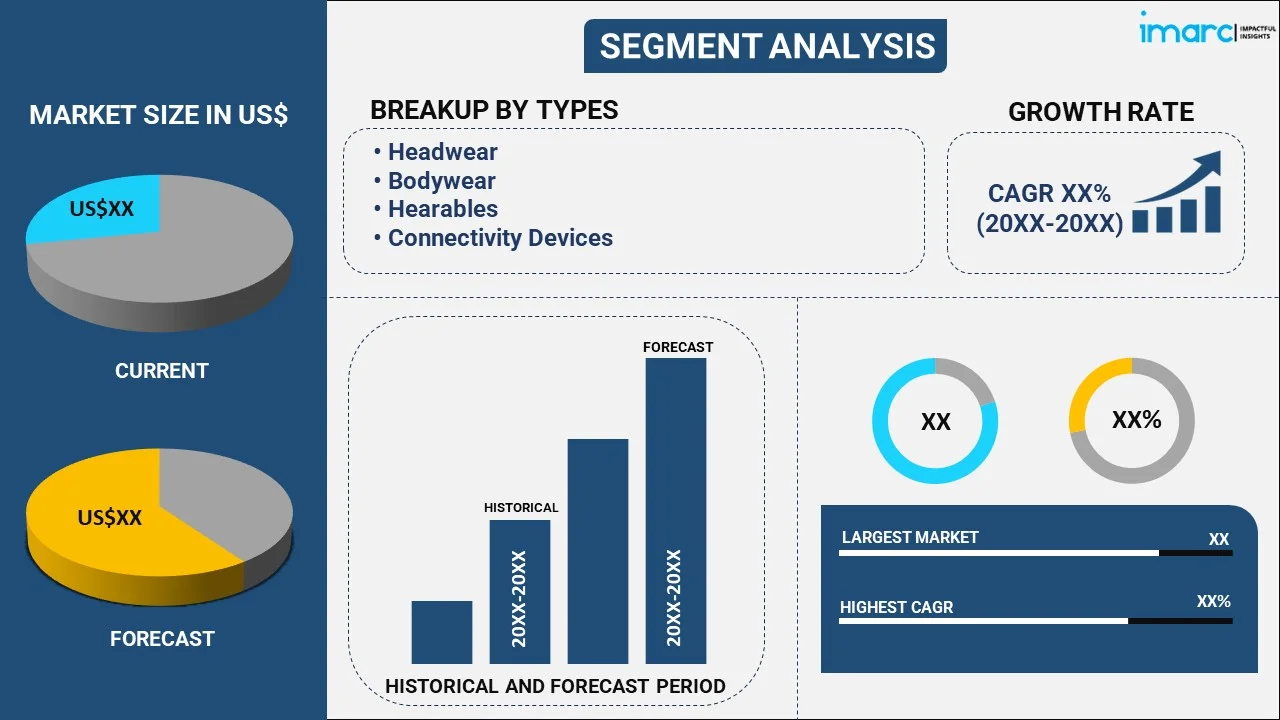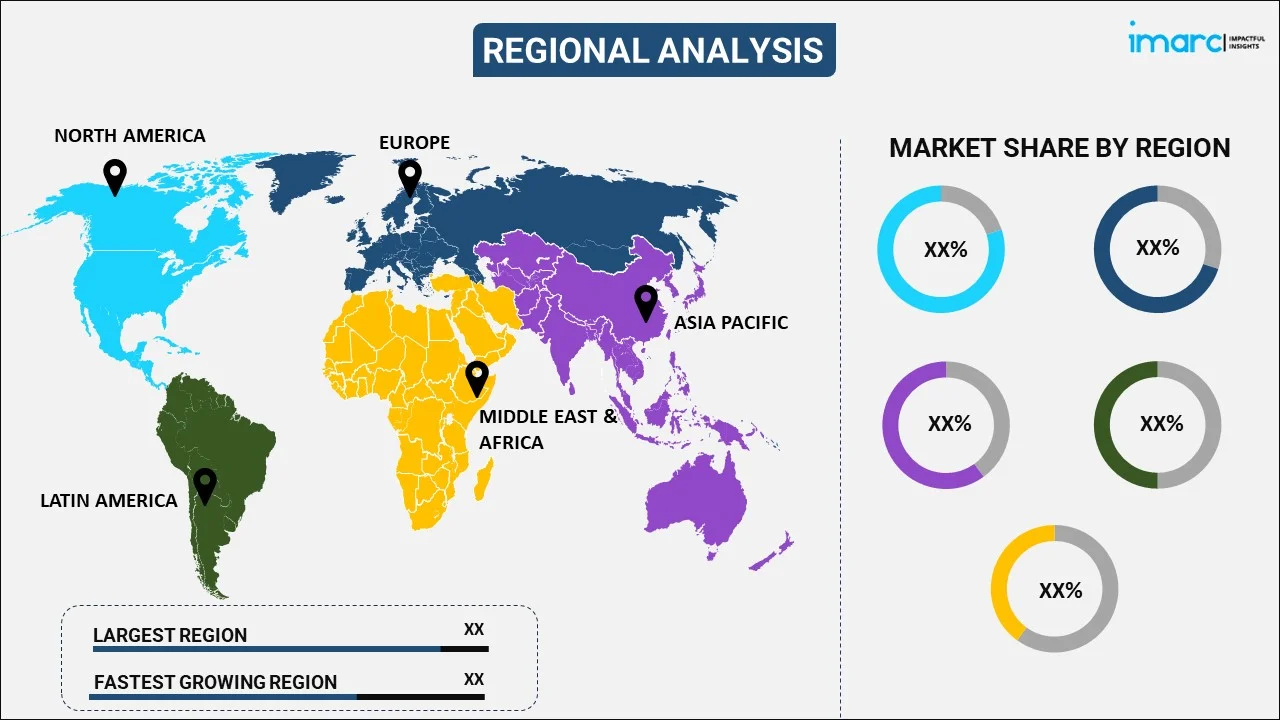
Super Soldier Wearable Technology Market Report by Type (Headwear, Bodywear, Hearables, Connectivity Devices), Application (Personal Protection, Communication and Navigation, Situational Awareness, Power and Energy Management, Training and Simulation), End User (Infantry, Special Forces, Air Force), and Region 2025-2033
Market Overview:
The global super soldier wearable technology market size reached USD 8.6 Billion in 2024. Looking forward, IMARC Group expects the market to reach USD 19.9 Billion by 2033, exhibiting a growth rate (CAGR) of 9.81% during 2025-2033. The increasing geopolitical tensions, rising use of drones, and the growing investments by governing agencies of numerous countries represent some of the key factors driving the market.
|
Report Attribute
|
Key Statistics
|
|---|---|
|
Base Year
|
2024
|
|
Forecast Years
|
2025-2033
|
|
Historical Years
|
2019-2024
|
|
Market Size in 2024
|
USD 8.6 Billion |
|
Market Forecast in 2033
|
USD 19.9 Billion |
| Market Growth Rate 2025-2033 | 9.81% |
Super soldier wearable technology comprises exoskeletons, smart textiles, ballistic protection, and augmented reality systems that are designed to enhance the performance of soldiers and situational awareness on the battlefield. It helps soldiers perform multiple tasks, including carrying heavy equipment, navigating difficult terrain, and detecting threats. It assists in improving the physical capabilities of armed forces, such as enhancing strength, speed, and endurance and protecting against different forms of harm. It also improves communication between soldiers and commanders to complete their missions more effectively and efficiently. It provides increased protection against bullets, shrapnel, and other threats that reduce the risk of injury or death on the battlefield.
Super Soldier Wearable Technology Market Trends:
The increasing geopolitical tension and considerable growth in the military and defense sectors represent one of the major factors driving the demand for super soldier wearable technologies around the world. Moreover, various military and defense organizations are investing in the upgradation of existing infrastructure to improve national security. This, along with the increasing use of super soldier wearable technologies in humanitarian missions, such as disaster response or search and rescue operations to enhance the safety and effectiveness of military personnel, is contributing to the market growth. Apart from this, there is a rise in the adoption of super soldier wearable technologies like smart textiles to improve the physical and mental performance of soldiers by providing instant monitoring of vital signs, fatigue levels, and other metrics. This, coupled with the growing utilization of nanotechnology and electronics in these smart textiles to manufacture military uniforms, is creating a positive outlook for the market. Furthermore, there is an increase in the integration of artificial intelligence (AI), machine learning (ML), biometrics, sensors, Bluetooth, Wi-Fi, and a global positioning system (GPS) in super soldier wearable technologies for the protection and well-being of soldiers on the battlefield. These advanced technologies are also used to identify soldiers and track their movements, analyze data from different sources, and share information about their surroundings, including maps, enemy positions, and mission objectives in real time with soldiers. This, along with the increasing use of drones and robotics for additional support to armed forces and minimize physical burden from them, is strengthening the growth of the market.
Key Market Segmentation:
IMARC Group provides an analysis of the key trends in each segment of the global super soldier wearable technology market, along with forecasts at the global, regional, and country levels from 2025-2033. Our report has categorized the market based on type, application, and end user.
Type Insights:

- Headwear
- Helmet
- Eyewear
- Respiratory Protective Equipment (RPE)
- Bodywear
- Exoskeleton
- Vest
- Jetpack
- Battery Pack
- Wearable Computers
- Hearables
- Tactical Radio
- Tactical Headset
- Connectivity Devices
- Rectangular Connectors
- Circular Connectors
- Radio Frequency Connectors
- Harness Connectors
The report has provided a detailed breakup and analysis of the super soldier wearable technology market based on the type. This includes headwear (helmet, eyewear, and respiratory protective equipment (RPE)), bodywear (exoskeleton, vest, jetpack, battery pack, and wearable computers), hearables (tactical radio and tactical headset), and connectivity devices (rectangular connectors, circular connectors, radio frequency connectors, and harness connectors). According to the report, hearables (tactical radio and tactical headset) represented the largest segment.
Application Insights:
- Personal Protection
- Communication and Navigation
- Situational Awareness
- Power and Energy Management
- Training and Simulation
A detailed breakup and analysis of the super soldier wearable technology market based on the application has also been provided in the report. This includes personal protection, communication and navigation, situational awareness, power and energy management, and training and simulation. According to the report, communication and navigation accounted for the largest market share.
End User Insights:
- Infantry
- Special Forces
- Air Force
The report has provided a detailed breakup and analysis of the super soldier wearable technology market based on the end user. This includes infantry, special forces, and air force. According to the report, infantry represented the largest segment.
Regional Insights:

- North America
- United States
- Canada
- Europe
- Germany
- France
- United Kingdom
- Italy
- Spain
- Russia
- Others
- Asia Pacific
- China
- Japan
- India
- South Korea
- Australia
- Indonesia
- Others
- Latin America
- Brazil
- Mexico
- Others
- Middle East and Africa
The report has also provided a comprehensive analysis of all the major regional markets, which include North America (the United States and Canada); Europe (Germany, France, the United Kingdom, Italy, Spain, Russia, and others); Asia Pacific (China, Japan, India, South Korea, Australia, Indonesia, and others); Latin America (Brazil, Mexico, and others); and the Middle East and Africa. According to the report, North America was the largest market for super soldier wearable technology. Some of the factors driving the North America super soldier wearable technology market included the increasing territorial conflicts, rising investment in modernizing and upgrading the existing military infrastructure, integration of advanced technologies, etc.
Competitive Landscape:
The report has also provided a comprehensive analysis of the competitive landscape in the global super soldier wearable technology market. Competitive analysis such as market structure, market share by key players, player positioning, top winning strategies, competitive dashboard, and company evaluation quadrant has been covered in the report. Also, detailed profiles of all major companies have been provided. Some of the companies covered include 3M Company, AirBorn Inc., Avon Protection plc, BAE Systems plc, Collins Aerospace (Raytheon Technologies Corporation), Elbit Systems Ltd., Honeywell International Inc., L3harris Technologies Inc., etc. Kindly note that this only represents a partial list of companies, and the complete list has been provided in the report.
Report Coverage:
| Report Features | Details |
|---|---|
| Base Year of the Analysis | 2024 |
| Historical Period | 2019-2024 |
| Forecast Period | 2025-2033 |
| Units | Billion USD |
| Types Covered |
|
| Applications Covered | Personal Protection, Communication and Navigation, Situational Awareness, Power and Energy Management, Training and Simulation |
| End Users Covered | Infantry, Special Forces, Air Force |
| Regions Covered | Asia Pacific, Europe, North America, Latin America, Middle East and Africa |
| Countries Covered | United States, Canada, Germany, France, United Kingdom, Italy, Spain, Russia, China, Japan, India, South Korea, Australia, Indonesia, Brazil, Mexico |
| Companies Covered | 3M Company, AirBorn Inc., Avon Protection plc, BAE Systems plc, Collins Aerospace (Raytheon Technologies Corporation), Elbit Systems Ltd., Honeywell International Inc., L3harris Technologies Inc., etc. |
| Customization Scope | 10% Free Customization |
| Post-Sale Analyst Support | 10-12 Weeks |
| Delivery Format | PDF and Excel through Email (We can also provide the editable version of the report in PPT/Word format on special request) |
Key Questions Answered in This Report:
- How has the global super soldier wearable technology market performed so far, and how will it perform in the coming years?
- What are the drivers, restraints, and opportunities in the global super soldier wearable technology market?
- What is the impact of each driver, restraint, and opportunity on the global super soldier wearable technology market?
- What are the key regional markets?
- Which countries represent the most attractive super soldier wearable technology market?
- What is the breakup of the market based on the type?
- Which is the most attractive type in the super soldier wearable technology market?
- What is the breakup of the market based on the application?
- Which is the most attractive application in the super soldier wearable technology market?
- What is the breakup of the market based on the end user?
- Which is the most attractive end user in the super soldier wearable technology market?
- What is the competitive structure of the global super soldier wearable technology market?
- Who are the key players/companies in the global super soldier wearable technology market?
Key Benefits for Stakeholders:
- IMARC’s report offers a comprehensive quantitative analysis of various market segments, historical and current market trends, market forecasts, and dynamics of the super soldier wearable technology market from 2019-2033.
- The research study provides the latest information on the market drivers, challenges, and opportunities in the global super soldier wearable technology market.
- The study maps the leading, as well as the fastest-growing, regional markets. It further enables stakeholders to identify the key country-level markets within each region.
- Porter's five forces analysis assist stakeholders in assessing the impact of new entrants, competitive rivalry, supplier power, buyer power, and the threat of substitution. It helps stakeholders to analyze the level of competition within the super soldier wearable technology industry and its attractiveness.
- Competitive landscape allows stakeholders to understand their competitive environment and provides an insight into the current positions of key players in the market.
Need more help?
- Speak to our experienced analysts for insights on the current market scenarios.
- Include additional segments and countries to customize the report as per your requirement.
- Gain an unparalleled competitive advantage in your domain by understanding how to utilize the report and positively impacting your operations and revenue.
- For further assistance, please connect with our analysts.
 Request Customization
Request Customization
 Speak to an Analyst
Speak to an Analyst
 Request Brochure
Request Brochure
 Inquire Before Buying
Inquire Before Buying




.webp)




.webp)












